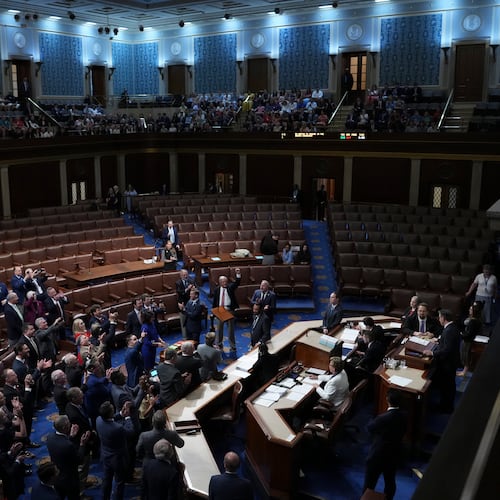Across the table from me, about to be deposed in a case of alleged Los Angeles Police Department excessive force, sat a young police officer. For once, I thought, I was facing a cop who might help my case. She clearly wasn’t accustomed to this. I could read in her face a combination of anger and disgust. Maybe, I thought, just maybe, she would tell the truth.
It was an especially egregious case. An elderly woman had been thrown down the steps by an officer pursuing the woman’s suspect grandson. The woman suffered a devastating compound fracture of her leg; she wouldn’t walk again. It was avoidable, bad policing, and I hoped the officer who had witnessed it might not feel bound by the cop code of silence.
As it turns out, I was wrong. That deposition would be one more in the long history of the refusal of police to be honest about excessive force, a history that those of us who do civil rights work know all about but that the general public has only begun to understand as videos of bad policing come to light.
The practice of police videotaping is both part of the solution for excessive force and evidence of how routinely officers have lied about it with impunity. Results from police departments using body cameras demonstrate these effects.
From 2010 to 2014, the Oakland Police Department slowly instituted the use of body cameras, with almost all officers wearing them by 2014. Use of force - the effort required to “compel compliance by an unwilling subject,” in the words of the National Institute of Justice - fell to 572 through the last two weeks of 2014 from 2,186 incidents in 2009 (the last year no officers wore body cameras).
That’s a big difference - to an average of 12 incidents a week from an average of 44 a week. There could be many factors contributing to such a reduction, but chief among them is that body cameras changed police behavior, lowering the total number of incidents. The data further suggest that before body cameras, some portion of the use-of-force incidents was unnecessary, even excessive.
In other words, although it’s possible that citizens of Oakland became markedly less dangerous or put up less resistance to arrest over the three years covered by this data, it’s more likely that body cameras put a lid on police use of excessive force.
The effect of body cameras is just as striking in the context of a subset of that data: the use of deadly force. Oakland police reported that for 18 months, from June 2013 to December 2014, there were no officer-involved shootings in a city that once averaged eight a year. Again, a probable explanation for such a decrease is that, before being monitored by body cameras, officers could falsely claim they needed to use deadly force and get away with it. Once they were being monitored by video cameras, their behavior changed.
Did complaints fall as well? Oakland does not release that data, but with the overall reduction in force, surely the number of complaints declined proportionately.
A video camera isn’t thinking about having a beer with the guys or making lieutenant; it isn’t a compromised process in which the police try to police themselves. It records what it records and ultimately allows us to decide what’s right. Police departments everywhere must follow the Los Angeles Police Commission’s recent decision and make body cameras a mandatory part of every officer’s equipment.
Attorney James S. Muller has litigated civil rights cases, and in particular police excessive-force cases, for 28 years in Los Angeles. He wrote this for the Los Angeles Times.
About the Author
Keep Reading
The Latest
Featured


